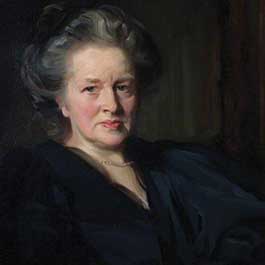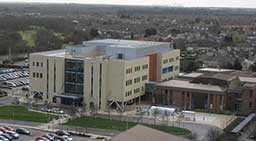Mamata Pandya
February 11 is International Day of Women and Girls in Science. In order to achieve full and equal access to and participation in science for women and girls, and further achieve gender equality and the empowerment of women and girls, the United Nations General Assembly declared 11 February as the International Day of Women and Girls in Science in 2015. Teacher Plus would like to celebrate this day and the many women in science by bringing you this monthly column.
This column will carry stories of women who have been pioneers or forerunners in different areas of STEM. They are stories of women from different parts of the world, in different time periods, with one thing in common: they achieved what they did in the face of numerous challenging circumstances, in times when the role of women in society was perceived very differently. Thus their professional achievements also signified important steps in the struggle for women’s rights. These are not just narratives of the scientific breakthroughs, but stories with a human interest angle. We hope that these inspire and evoke admiration from all readers and open new windows for the young generation of women who will themselves be exploring hitherto unexplored frontiers and scaling new heights.
The passing away of Queen Elizabeth II in September 2022 marked the end of the rule of the longest reigning monarch of Great Britain. The closest to her record was the rule of Queen Victoria who reigned for 64 years in a period that became known as the Victorian Era.
While the reign of Queen Victoria was an extended period of peace, prosperity, progress, and essential social reforms for Britain, it was also characterized by widespread poverty, injustice, and social discrimination. There was a very strictly defined ‘class system’ that determined every aspect of social life.
There was also a very strong perception (and application) of gender roles. A woman’s place was clearly considered to be in the home, and domesticity and motherhood were considered by society to be a sufficient emotional fulfilment for females. Even upper class women who were educated to some degree by private tutors were not encouraged to use their minds in any way that would distract them from their assigned roles.
The rights that women enjoyed were similar to those that were enjoyed by young children whereby they were not allowed to vote, sue, or even own property. But these rights were to be questioned and changes demanded by a group of women who pioneered the suffrage movement. Among these was Elizabeth Garrett Anderson who broke many glass ceilings in her day.

Courtesy: www.wikipedia.org
Elizabeth Garrett was born on 9 June 1836 in Whitechapel, London, to Newson Garrett and his wife Louisa; the second of 12 children. Her father was originally a pawn broker who went on to become a successful businessman. The family moved to Aldeburgh in Suffolk when Elizabeth was very young. As a child, Elizabeth got her basic education from her mother and a governess. When she was 13 she was sent to a private boarding school near London where she was taught languages and literature, but not the sciences and math. Unusual for the time, her parents encouraged their daughters to travel, explore, and pursue their ambitions. After completing school, Elizabeth, although engaged in domestic duties, continued to study Latin and mathematics with her brothers’ tutors and read widely. It was accepted that like all the young women of her generation, Elizabeth would marry and devote herself to keeping house and tending her family.
When she was 22, a group of women published a magazine for women called English Woman’s Journal. Among these women was one Emily Davies, who became a dear friend. She invited Elizabeth to hear a lecture given by Elizabeth Blackwell, the first American woman physician. Elizabeth was so inspired by her namesake and her lecture that she decided to become a doctor. A woman studying medicine was unheard of at that time. But her father was supportive. She was denied admission in any medical school, so she enrolled as a nursing student at Middlesex Hospital and attended classes intended for male doctors. She also employed a tutor to study anatomy and physiology. But after complaints from the other students, she was barred from the hospital; however Elizabeth continued to study on her own. She was determined to secure a qualifying diploma that could entitle her to put her name on the Medical Register. Unless a person’s name was listed on the Medical Register, that person could not legally practice medicine in England.
Elizabeth found a loophole: she registered to pursue a degree of Licentiate of the Society of Apothecaries, which was at that time the main examining body for medicine in England. The Society did not specifically forbid women from taking their examinations. There was also no law preventing a woman from preparing and administering medications. In 1865 she passed their exams and gained the Licence of Apothecaries which permitted the holders to dispense physician’s prescriptions. Elizabeth became the first woman in Britain qualified to do so. This was an unprecedented achievement; the Society subsequently changed its rules to prevent other women entering the profession this way.
Even though she now had a licence, Elizabeth still could not get a medical post in any hospital. With her father’s financial backing, in 1866 she opened her own dispensary in London. A little later, towards her goal to establish a hospital for women staffed by women, Elizabeth set up St. Mary’s Dispensary for Women and Children. Initially, people were reluctant to consult a female physician, but an outbreak of cholera saw patients teeming to her clinic.

Photo: Richard Rogerson
Courtesy: www.wikipedia.org
It was during this period that Elizabeth was also getting engaged with the issue of women’s rights. Her younger sister Millicent Fawcett was active in this growing movement; the two sisters with a group of like-minded women set up a discussion group that strongly influenced the battle for women’s education and empowerment.
Although Elizabeth had already obtained many ‘firsts’ she was still determined to achieve her original dream of a formal degree in medicine. So she registered at the University of Paris from where she successfully earned her Doctor of Medicine degree in 1870. The British Medical Register refused to recognize her qualification.
In 1870 Elizabeth became visiting medical officer for the East London Hospital for Children. In 1872 Elizabeth transformed the St Mary’s Dispensary for Women and Children into the New Hospital for Women in London. The hospital specialized in women’s health and all the staff were women. It was renamed the Elizabeth Garrett Anderson Hospital in 1918 and continued to appoint only female staff until the 1980s. Elizabeth also co-founded the London School of Medicine for Women, the first place in Britain specifically intended to train women as doctors.
In 1871 Elizabeth married businessman James Anderson in a wedding ceremony in which she did not take the ‘vow of obedience’; she continued with her pioneering work even as she ran her own household and brought up three children.
Elizabeth’s determination paved the way for other women. In 1876 an Act was passed permitting women to enter the medical profession and the Medical Register. Today over 48 per cent of licensed doctors in UK are women.
Elizabeth continued to lecture at the London School of Medicine for Women for 23 years and from 1883 she was also the School’s dean. She was senior physician of the New Hospital for Women for 24 years. Elizabeth was the first and only female member of the British Medical Association for 19 years, and in 1896-97 she became president of the East Anglian branch of the British Medical Association. She also found time to write on medical topics, including a textbook for students.
In 1902, Elizabeth retired from her medical career and moved to the town of Aldeburgh in Suffolk. In 1908, at the age of 72, she became the mayor of Aldeburgh; she was the first woman mayor in England. In her final years, Elizabeth was a prominent member of the women’s movement and campaigned for equal rights for women. Elizabeth Garrett Anderson died in Aldeburgh on 17 December 1917 at the age of 81, just two months before the Representation of People Act extended the right to vote to women over 30.
Elizabeth Garrett Anderson, with quiet determination and persistence, opened many doors, and paved the path that women take for granted today.
The author worked at the Centre for Environment Education in Ahmedabad for over three decades, where she was engaged in instructional design for educators and children. She is now an independent consultant, editor, writer, translator, storyteller and blogger. She can be reached at mamata.pandya@gmail.com.
